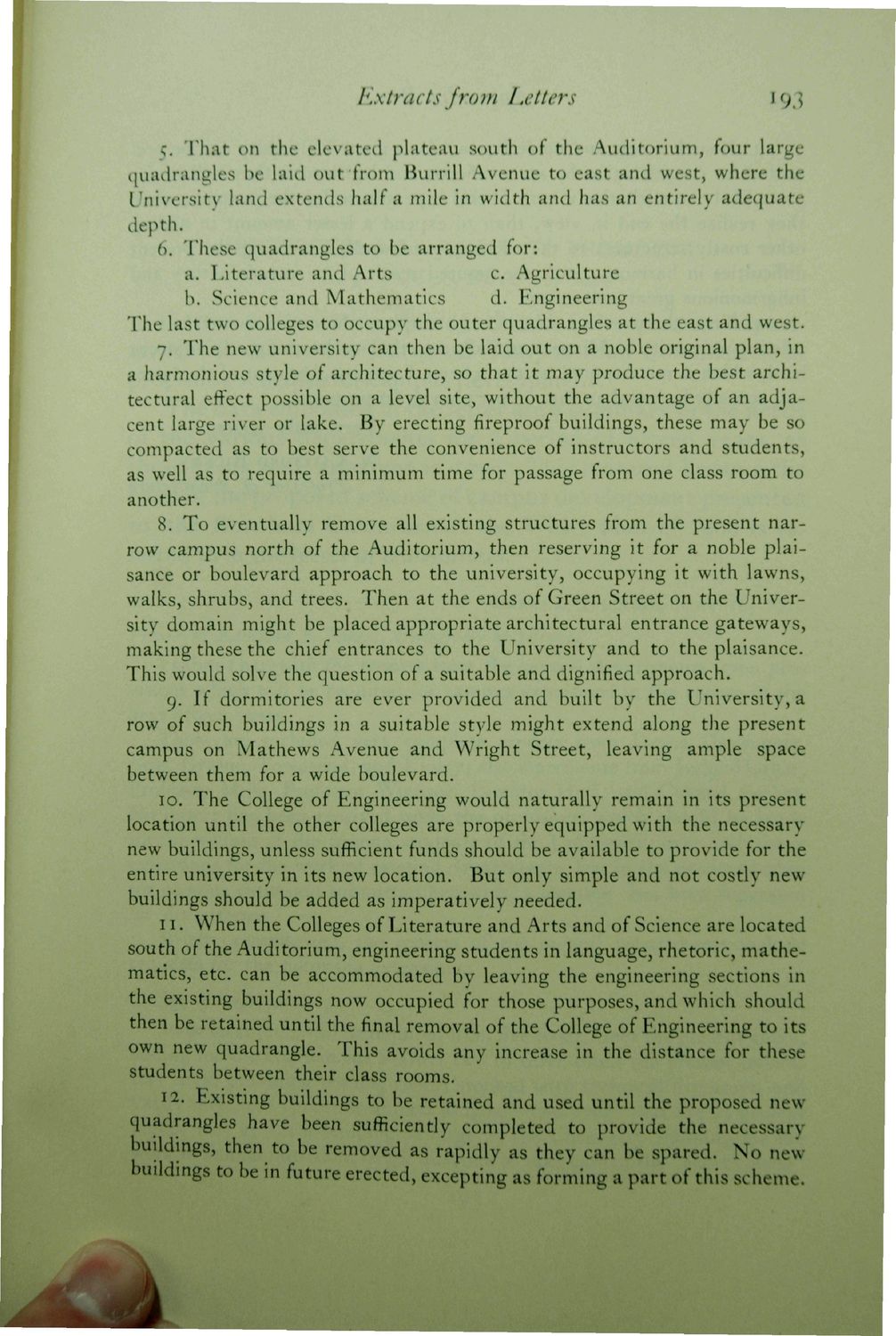| |
| |
Caption: Book - 30 Year Master Plan (Tilton & O'Donnell)
This is a reduced-resolution page image for fast online browsing.

EXTRACTED TEXT FROM PAGE:
Extracts from Letters l 93 5. That on the elevated plateau south of the Auditorium, four large quadrangles be laid out'from Burrill Avenue to east and west, where the University land extends half a mile in width and has an entirely adequate depth. 6. These quadrangles to be arranged for: a. Literature and Arts c. Agriculture b. Science and Mathematics d. Engineering The last two colleges to occupy the outer quadrangles at the east and west. 7. The new university can then be laid out on a noble original plan, in a harmonious style of architecture, so that it may produce the best architectural effect possible on a level site, without the advantage of an adjacent large river or lake. By erecting fireproof buildings, these may be so compacted as to best serve the convenience of instructors and students, as well as to require a minimum time for passage from one class room to another. 8. To eventually remove all existing structures from the present narrow campus north of the Auditorium, then reserving it for a noble plaisance or boulevard approach to the university, occupying it with lawns, walks, shrubs, and trees. Then at the ends of Green Street on the University domain might be placed appropriate architectural entrance gateways, making these the chief entrances to the University and to the plaisance. This would solve the question of a suitable and dignified approach. 9. If dormitories are ever provided and built by the University, a row of such buildings in a suitable style might extend along the present campus on Mathews Avenue and Wright Street, leaving ample space between them for a wide boulevard. 10. The College of Engineering would naturally remain in its present location until the other colleges are properly equipped with the necessary new buildings, unless sufficient funds should be available to provide for the entire university in its new location. But only simple and not costly new buildings should be added as imperatively needed. 11. When the Colleges of Literature and Arts and of Science are located south of the Auditorium, engineering students in language, rhetoric, mathematics, etc. can be accommodated by leaving the engineering sections in the existing buildings now occupied for those purposes, and which should then be retained until the final removal of the College of Engineering to its own new quadrangle. This avoids any increase in the distance for these students between their class rooms. 12. Existing buildings to be retained and used until the proposed new quadrangles have been sufficiently completed to provide the necessary buildings, then to be removed as rapidly as they can be spared. No new buildings to be in future erected, excepting as forming a part of this scheme.
| |